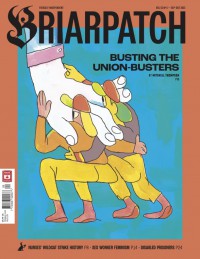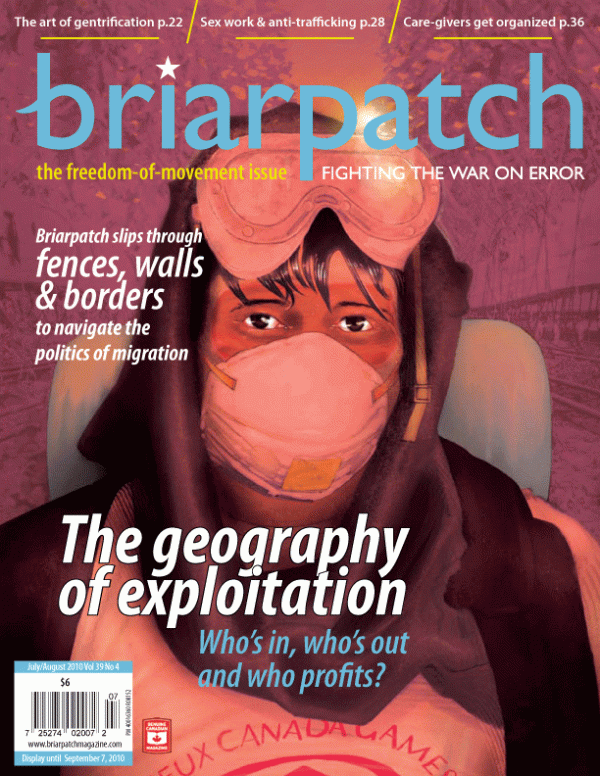
Freedom of movement
People move across borders from necessity or desperation, providing the citizens of the territory they enter with an unfree workforce that is often used to undermine the rights of more established workers. The colour of one’s passport, or the misfortune of having been displaced from one’s country of origin, can do more to limit a person’s opportunities than almost any other single factor.
Add To Cart $7.95
-
 Magazine
MagazineLetter from the editor
I’ve undergone 19 years of schooling, but I’d say my real education came the summer after I finished my graduate degree. I spent that growing season, and the next, as part of a frontline literacy program in Ontario, working and living on farms alongside migrant workers from Mexico and the Caribbean, picking tomatoes and sweet corn, priming tobacco, harvesting ginseng.
-
 Magazine
MagazineA border runs through it
At midnight on May 31, 2009, the guards who manned the Canada Border Services Agency (CBSA) station on the Mohawk (Kahnienkehaka) reserve of Akwesasne, near Cornwall, Ontario, abandoned the Canadian side of the U.S.-Canada border and went home. The guards were to be issued 9-mm Beretta pistols on the following day as part of Canada’s border security policy, but had been warned by Akwesasne community groups that armed agents of the Canadian government would not be tolerated on their land.
-
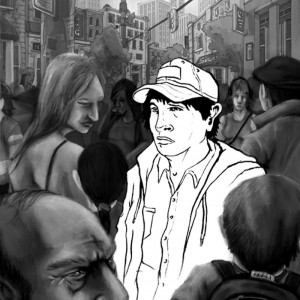 Magazine
MagazineLetters across borders
Authman and Zidan Mushtaak are Pakistani nationals who moved to the United States 15 years ago, as children. Though they now live less than 800 kilometres apart, Authman and Zidan have been separated for the past three years by an impenetrable, invisible line created by Canadian and U.S. immigration laws. The following is a series of emails exchanged between the brothers.
-
 Magazine
MagazineExiled for love
Arsham Parsi is a tireless organizer for queer rights, both internationally and in his native Iran. He is proud to call Canada home, but in the wake of proposed changes to Canada’s refugee status determination system and the elimination of any reference to gay rights in the new version of Canada’s citizenship guide, some wonder whether Parsi would be admitted to this country if he claimed asylum here today.
-
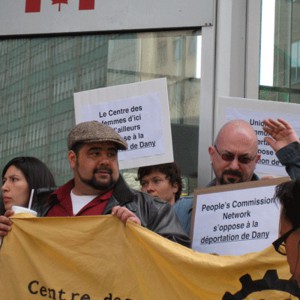 Magazine
MagazineImmigration double jeopardy
Imagine you were born in Honduras and spent your childhood days on the dusty streets of Tegucigalpa. When you’re 12, you and your parents emigrate to Canada. You’re granted permanent residency and the stability it offers. By the time you’re 20, Canada is home and Honduras a distant memory.
-
 Magazine
MagazineCreative class struggle
Two downtown neighbourhoods in Hamilton, Ontario – James St. North and Landsdale – have recently been the site of several skirmishes in a gentrification war waged in the media, art galleries and on the streets themselves.
-
 Magazine
MagazineSex work, migration and anti-trafficking
Nandita Sharma is an activist, scholar, and the author of Home Economics: Nationalism and the Making of ‘Migrant Workers’ in Canada (University of Toronto Press, 2006), and “Anti-Trafficking Rhetoric and the Making of a Global Apartheid” (_NWSA #17, 2005).
-
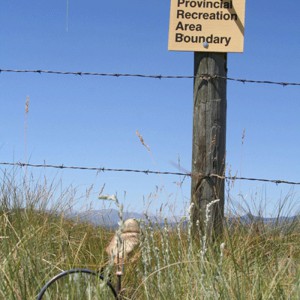 Magazine
MagazineThe Aeolian Recreational Boundary Institute
Barbed wire fences are ubiquitous on the prairie landscape. They symbolize domination of the land, ownership, entitlement and control. Wire fences are a western settlement paradigm that was brought to North America by settlers and land surveyors who sought to tame the limitless territory with mathematical delineations of latitude and longitude and monetary measures of land value.
-
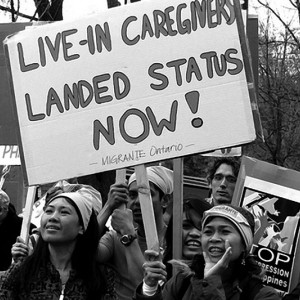 Magazine
MagazineFinding our own voices
Jocelyn Dulnuan, 27 years old, was murdered on October 1, 2007, at the mansion in Mississauga, Ontario where she worked as a live-in caregiver. Dulnuan had lived in Canada for just under a year, working at the $15 million, 30,000-square-foot mansion for two months to serve the needs of her employer Dr. Jaya Chanchlani, her husband, Vasu, and their three children.
-
 Magazine
MagazineCashing in on the border
On March 29, 2010, the Conservative government introduced new legislation designed to reform Canada’s asylum system, which governs the protection of refugees and their settlement in Canada. A key element of the proposed reform is the ability to deport individuals more quickly when their claims for asylum are denied.






